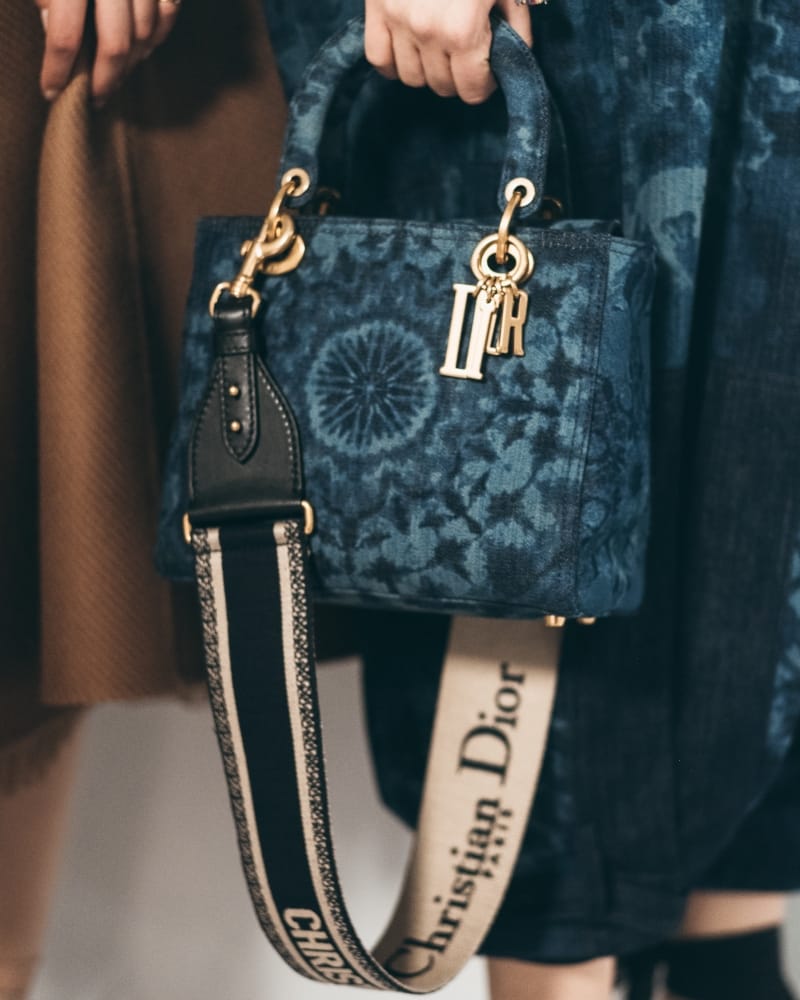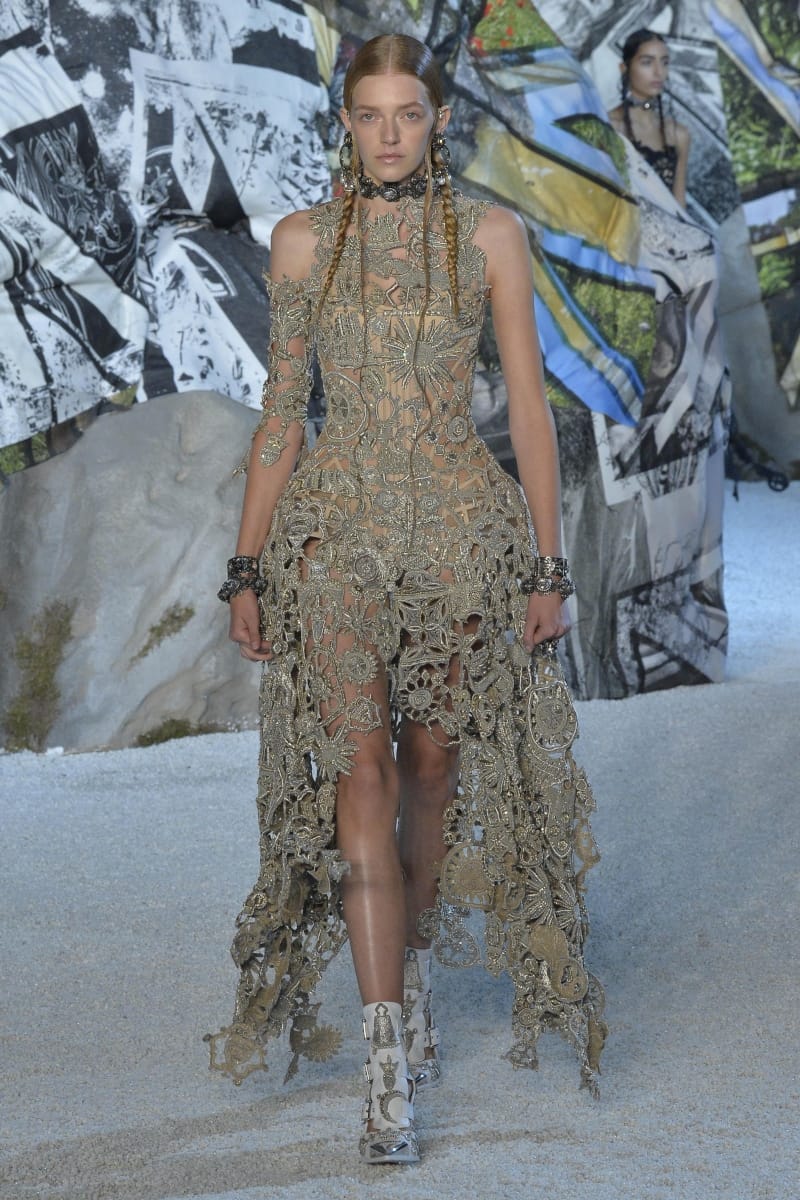
Fashion is always on the edge of the “next big thing”, be it biotech fibres crafted from organic DNA or 3-D-printed dresses that float effervescently down a runway. To some, this might seem like a gimmick straight out of Ridley Scott’s sci-fi Blade Runner, but for others, it’s indicative of fashion’s continuous pursuit of innovation, spanning across the industry’s retail—artificial intelligence, anyone?—and design landscapes. It’s what keeps editors and fashion loyalists at the edge of their seats, like Hussein Chalayan’s transformative dress from his Autumn/Winter ’00 collection, which shapeshifted into a table in the blink of an eye, or in more recent times, Iris van Herpen’s NASA-engineered plissé pieces from her Spring/Summer ’19 Couture collection.
That said, fashion also has an uncanny knack of looking to the past. As if to resist the rise of technology’s dominion, this season’s collections were a respite from the industry’s mechanisation. A contrast to the Futurism of Autumn/Winter ’18—see Louis Vuitton’s sci-fi offerings and Prada’s neo-raver—nostalgia made for a heart-warming return on the Spring/Summer ’19 runway. Jonathan Anderson at Loewe took the lead, as his latest collection at the Spanish house brought new life to folksy knits—think pagan-esque high priestesses meets ’80s pop band Wham!. Oversized ’80s bombers were paired with knitted tunics, while accessories bore a homespun resemblance; the iconic Hammock bag was woven in soft leathers, while the mini Gate was crafted from organic rattan. Elsewhere in Paris, Natacha Ramsay-Levi followed suit, and stepped up her free-spirited bohemian at Chloé with quaint patchwork tailored into slouchy blazers and agile maxiskirts, accented with corded belts. It isn’t all folk work here though, as Maria Grazia Chiuri demonstrated at Dior. Fashion’s current poster child of feminism sent out models dressed in ethereal interpretations of tie-dye—note: a craft that dates back to 500 AD in Peru, made popular by ’60s rock star John Sebastian. Cleverly combining the art of hand with traditional Japanese techniques, psychedelic floral motifs were brought to life on ethereal plissé skirts, while the maison’s iconic Bar jackets were given the same treatment—this time, in casual denim. Macramés were also present, skilfully braided out of delicate tulles to further punctuate the Pina Bausch-inspired collection.

These stark resurgences were compelling reminders of how technology has consumed the fashion industry as a whole. According to the Business of Fashion’s annual ‘State of Fashion’ report, consumer shifts enabled by technology became 2018’s most important trend, as cited by executives. Case in point: a 2017 millennial survey notes consumers are more likely to find inspiration from external sources such as social media, influencers, friends, and television than directly from a brand or retailer. This has spurred an increased demand for immediacy, which retailers are currently solving through the use of artificial intelligence on the shop floor. In design, technology has also been integrated into everyday clothing; bluetooth-tracking devices are woven into bags such as those by designer Asher Levine, while lab-grown spider-silk threads are used as a more sustainable approach to fashion. In Toronto, interactive fabrics are currently being masterminded by Myant, a textile computing company, which has the ability to extract data from its wearer. Widely considered as the next frontier of fashion, yarns are paired with electronic sensors so that essential information can be captured from the human body, including ECG, respiration, temperature, and movement.

The season’s new Lady Dior bag, this time in psychedelic tie-dye
Consider this a Black Mirror effect, a peek into the future where modern advancements have displaced traditional craftsmanship, a far cry from the feather marquetry of Lésage at Chanel or flou and tailleur ateliers at Dior. Just like how Spotify and Netflix have mostly replaced CDs and video stores, robotics are hot on the heels of skilled artisans. Michael Chui, a partner at the McKinsey Global Institute, says, “Benefits to automation include more reliability, less variants. There is particularly high value where time-to-market is important. You’ll potentially see manufacturing footprints change.” It’s a distressing truth to what lies just beyond the horizon in years to come, resulting in many métiers d’art diminishing. It’s the reason, why famed maisons such as Chanel are moving fast in the game of acquisitions, buying over couture ateliers like the Calais-based lace maison Sophie Hallette, Lésage, and Lemarié as a means to preserve such craft. “For us at Chanel, it’s a guarantee that this creativity can continue to exist for the next 50 years,” says Bruno Pavlovsky, Chanel’s president of fashion, on the house’s acquisitions, and certainly a step in the right direction in safeguarding age-old vocations. Even for its latest Spring/Summer ’19 collection—Karl Lagerfeld’s second last at Chanel—Provençal raw-edge straw hats were sent down the runway in iconic tweed suits and jute-embroidered shift dresses, all photographed and shared via Instagram almost immediately from every show attendees—straight off their iPhone XS. A paradoxical state of being, of which this season’s collections have only served as a reminder of the simpler times … and a celebration, of the human touch.

Sarah Burton’s demi couture approach at Alexander McQueen saw vintage garments deconstructed and exalted, with fine embroideries and delicate boning



